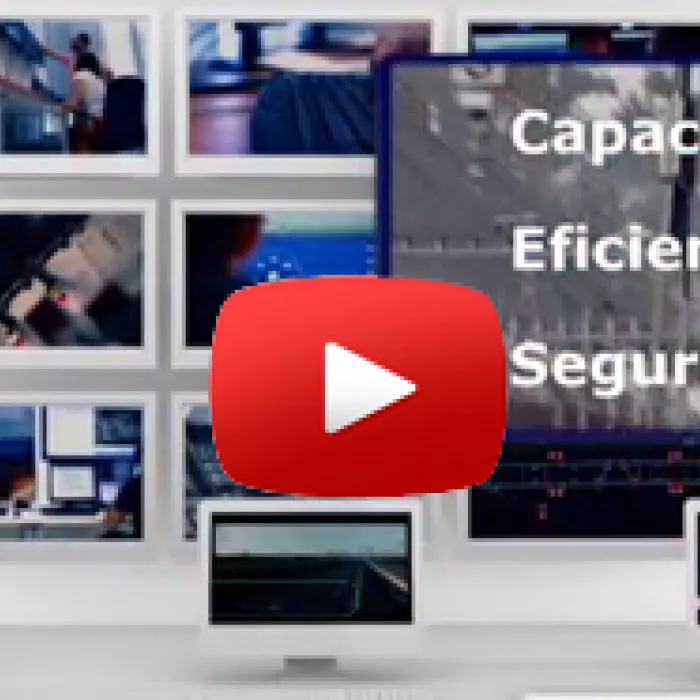
Thales Spain is represented in more than 2700 km of Spanish high speed network since Madrid-Sevilla first line, later Madrid-Lérida, Madrid-Valladolid, Córdoba-Málaga, La Sagra-Toledo, Madrid-Valencia-Albacete and Madrid-Galicia. At an international level we have deployed our signalling systems and experience on the Ankara-Istanbul line, that has allow us to enforce the high speed technology in conventional networks in Cuautitlán-Buenavista suburban line, the first ETCS system in America or the ETCS level 2 system that we are deploying in the Mexico-Toluca line and the ETCS level 1 project in Cuomavasi in Turkey.

President of Thales Spain
@JesusSBargos
“I couldn’t imagine the Spanish railway transport without Thales” In this way Jesús Sánchez Bargos, president of Thales Spain, defines the contribution of the company to the Spanish transportation railway industry
What is the role of Thales in the development of the Spanish railway?
I couldn’t imagine the Spanish railway transport industry without Thales. We have been working for 65 years in Spain and we have been privileged actors in the development of the Spanish railway transportation in one of the best railways that exists worldwide. We have always been known because of our close relationships with the clients and in this sense we’ve been planning our investment. We’ve been pioneer in the introduction of new technologies in the transportation sector. On April 1992, when the Madrid-Seville railway line begins, we were the first ones installing a signalling system based on electronic technology for a high speed railway. Since that moment, we have been the first ones in the introduction of different equipment’s and systems for the signalling and train control. Thanks to the investment did it for the administration to Spain in this sector, we could develop technological capabilities that allow us to start in international industries, accessing to countries, such as, Turkey, Egipt, Morocco, Argelia and Mexico.
The Spanish railway industry was the first on facing the great high speed challenge and the risk that supposed has been the first ones in the implementation of new technologies, which involve important I+D investments that create products and capabilities in Spanish companies like ours.
In your opinion, what technological future developments will be in the railway sector?
There are new competitors that bring new technologies. It is Thales ready to face this challenge?
Technological development is constantly and fortunately unstoppable. However, there are technologies in a very long term and this requires a lot of investment. We are still working to continue in technological developments forefront applied to the rail transport industry. The railway sector is going to progress towards the elimination of the elements in the ground, we will choose for the removal of an important number of elements in the fields. ¿For what do we need elements in the track that supply information if we have the chance of obtain them through another alternatives ways with the same security level? The use of new technologies, such as, satellites, would allow us to put in the ground just the essential equipment. Everything else will be smart intelligence on board the trains. We are talking about a very conservative sector in which it will be difficult to introduce any change; there is a security component that is non-available and priority, which makes every introduced change should have been validated broadly and in advance.

Innovation and development director
Thales Spain
“A smart and sustainable transport system. This is how Ana Romera, Innovation and development director of Thales Spain defines the train of the future”
The train is an integrative shaft of society. Users and governments are getting places for an intermodal transport, which makes from it a headstone. It arrives to the heart of urban cores, a thing that, for example, airports cannot afford. The user value connectivity between long, neighbourhood or urban transport (underground and buses). It has a lot of advantages versus another ways of transport. We are also making an effort in the energetic efficiency, under the catchword of been the green transport of the future. The railway infrastructure represents a cost, but in comparison with another systems could demonstrate it profitability and be a sustainable way. It is actually been. Also, is one of the safeties ones.
How will be the train of the future?
The train is future; it will need to be smarter. For example, they are making cuts in the infrastructure costs. There are automatic conduction systems that will exterminate the actual ones, for instance, signalling cases or engine driver guide. They are actually working in the underground, but yet not in all of the railway transport system in long distances but we are progressing. Currently, exist developments with a very superior intelligent that support the driver and norms engine, becoming in a most efficient way to travel. On the other hand, industry will has to work to offer more services to the user. I am referring to ancillary services, such as video surveillance, cybersecurity, information to passengers, etc. There are areas in which it will be necessary to continue advancing because the traveler will be more demanding. Operators should also make an effort to improve user support.





